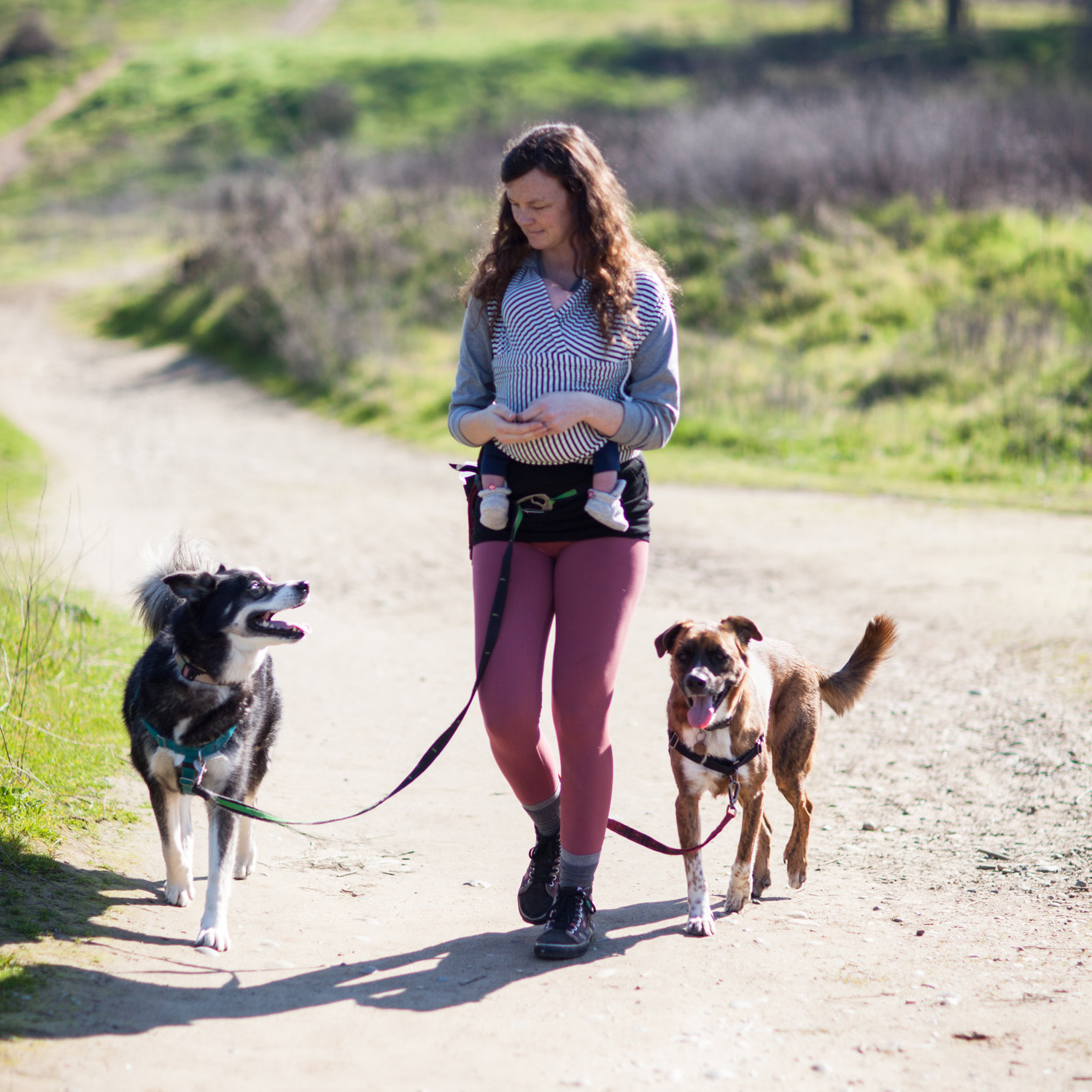As you work to solidify your dog’s understanding of your cues, you’ll want to begin working on what trainers commonly refer to as the three D’s - duration, distance and distraction. There are many, many ways to incorporate these elements into your training! But it is vital that you separate each of these out as you work on them.
“Stay” is a common behavior in which all of these elements are important. A common mistake I see dog owners make is that they lump together distance and duration. In other words, they spend no time working on duration specifically, but rather expect to build distance immediately while incorporating distance in at the same time. They cue the sit or down, then cue the stay and begin walking away. This can often create a frustrating session in which the dog is being repeatedly reset without earning reinforcement because the criteria is just too high! So let’s talk about each of these elements in a little more detail.
I like to work on duration first and foremost, especially when it comes to working on a stay. But duration can be important for many behaviors! Loose leash walking, for example, or even silly stuff like the “sit pretty” behavior in the photo above.
I think many people struggle to build duration because it’s not as fun and exciting as working on distance or distraction. It’s a methodical and repetitive process. To jump start duration, simply cue a behavior and then repeatedly reinforce in place. When I’m repeatedly reinforcing in place, I’m actually not using a marker. The marker signifies that the behavior has been completed, and so it serves in a way as a release as well. Instead, I may cue the behavior, reinforce in place, and then give a big excited release to do a more active behavior (holding still is hard, so incorporating more fun physical motion into the session can really help prevent boredom and frustration). This is actually a step I usually take before introducing the cue when I’m teaching a stay (although not necessarily for other behaviors).
We always want to think critically about how we’re using food in our training and for stationary behaviors, paying the dog in position works best (whereas for behaviors with more motion, treating out of position can sometimes be preferable - and treating out of position is useful when teaching a release). Regardless of if you’re teaching stay, or just working on duration for other behaviors, building duration generally looks like increasing duration in increments of seconds initially. We want to increase difficulty overall, but not in a purely linear way. So we may do something like:
2 seconds, 4 seconds, 5 seconds, 4 seconds, 8 seconds, 5 seconds, 10 seconds, 12 seconds, 15 seconds, 2 seconds, 8 seconds, 15 seconds, 20 seconds, 18 seconds, 25 seconds…
One reminder as you work on this: resist the urge to move much during your duration sessions - moving away is lumping in duration with your distance, and other movements can fall more under the “distraction” category.
The more you practice, the bigger your leaps can get. In other words, you’ll be able to begin increasing time in increments of minutes vs seconds once the behavior becomes fairly fluent for a few minutes at a time.
I dive into more info on specifics for duration building for stationing behaviors in the stationing series - you can find that post here if you’d like to check out some more examples of how this works.

